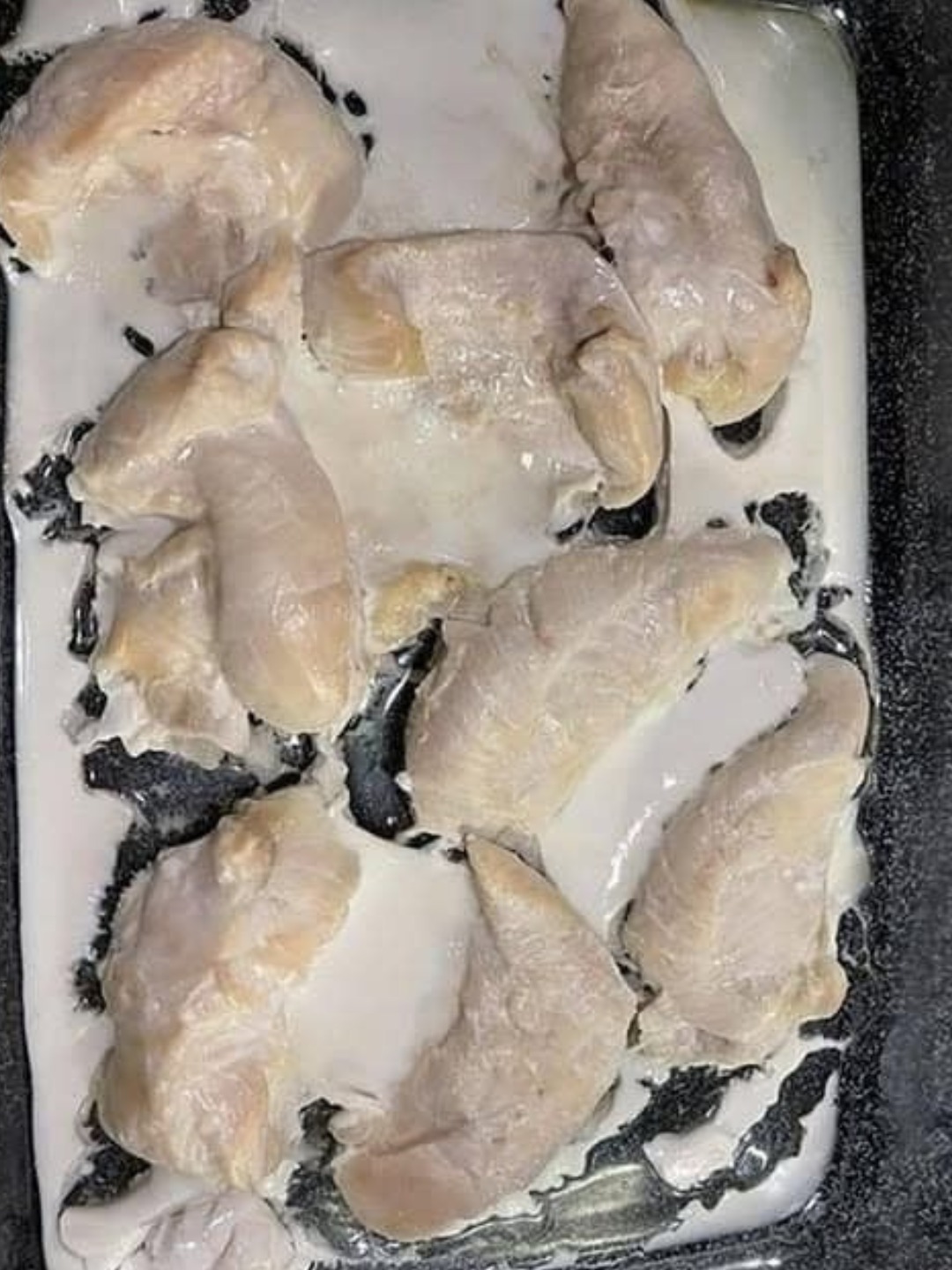The white discharge is a natural byproduct of cooking and completely safe to eat. It’s just coagulated protein and juices , not pus, fat, or any kind of toxin.However, if you notice these signs before cooking, be concerned:
Strong foul odor
Slimy texture (before cooking)
Discoloration (gray, green, or yellow tones)
If your chicken shows any of these signs before cooking, it could be spoiled — and should be discarded.
But during cooking? That goo is perfectly normal.
How to Minimize the Goo for Better Presentation
While the goo is harmless, it can make your dish look less appetizing — especially if you’re serving guests or prepping meal prep for social media.
Here are practical ways to reduce the appearance of albumin and keep your chicken looking clean and professional:
1. Brine Your Chicken Before Cooking
A simple saltwater brine helps chicken retain moisture and reduces protein leakage during cooking.
How to Brine:
Mix 1 quart of water with 2–3 tablespoons of salt.
Soak chicken for 20–30 minutes.
Pat dry before cooking.
You can also use buttermilk, yogurt, or vinegar-based marinades for similar effects.
2. Pat Dry Before Cooking
Excess moisture on the surface of chicken leads to more albumin release. To avoid this:
Use paper towels to gently pat chicken dry before cooking
Letting chicken sit at room temperature for 15–20 minutes before cooking can also help even out moisture distribution
This step makes a big difference in presentation — especially when searing, roasting, or air-frying.
3. Cook at Lower Temperatures
High heat causes rapid contraction of muscle fibers, which pushes out more moisture — and more albumin.
To preserve juiciness and minimize unsightly goo:
Cook chicken at moderate temperatures (350–375°F / 175–190°C)
Avoid boiling chicken rapidly — opt for gentle simmering instead
Cover the chicken when baking to slow moisture loss
Using a slow cooker or sous vide method can also help retain moisture inside the meat — rather than letting it escape.
SEE NEXT PAGE
ADVERTISEMENT

